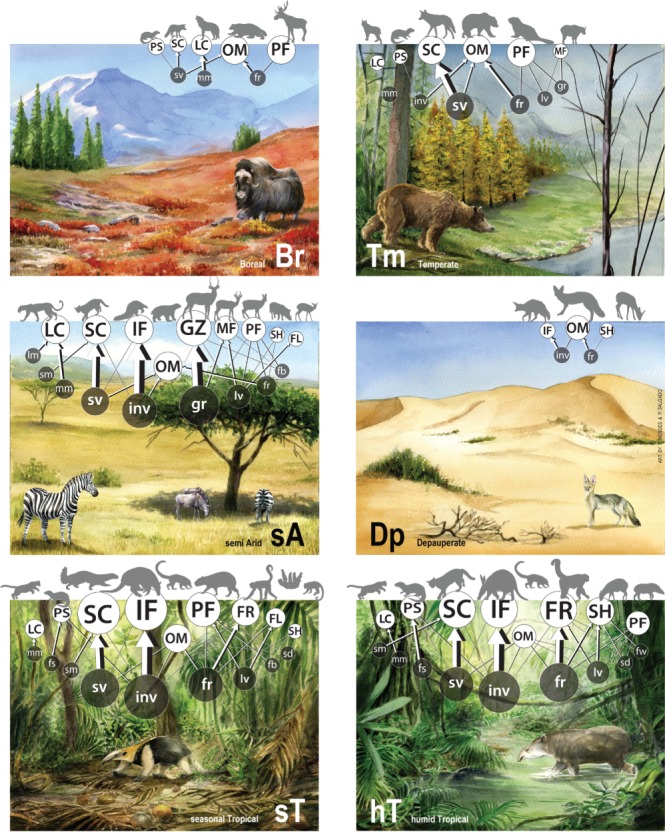Fig. 1.

Six types of mammal trophic structures around the world: boreal, temperate, semi-arid, seasonal tropical, humid tropical, and depauperate. For convenience, trophic structures are represented as bipartite networks depicting energy flows between trophic guilds and their main resources. Resources: grass gr, leaves lv, fruits fr, flowers fw, forbes fb, seeds sd, invertebrates inv, fish fs, small vertebrates sv, mammals (1–10 kg) sm, 10–100 kg mm, (>100 kg) lm. Trophic guilds: selective herbivores SH, plant material feeders PF, small carnivores SC, frugivores FR, folivores FL, mixed feeders (being both grazers and browsers), MF, omnivores OM, grazers Gz, piscivores PS, invertebrate feeders IF, large carnivores LC. The size of the nodes for the guilds (white) is proportional to the number of species from the guild in the food web. Arrows represent the fluxes of energy from resources to guilds. The magnitude of the fluxes is represented by the thickness of the arrows and increases with the sum of the estimated percentage of that resource in the diet of all the species in that guild. The size of the nodes for resources (black) is proportional to their total contribution to the web. This contribution is equivalent to the sum of the estimated percentage of that resource in the diet of all species
